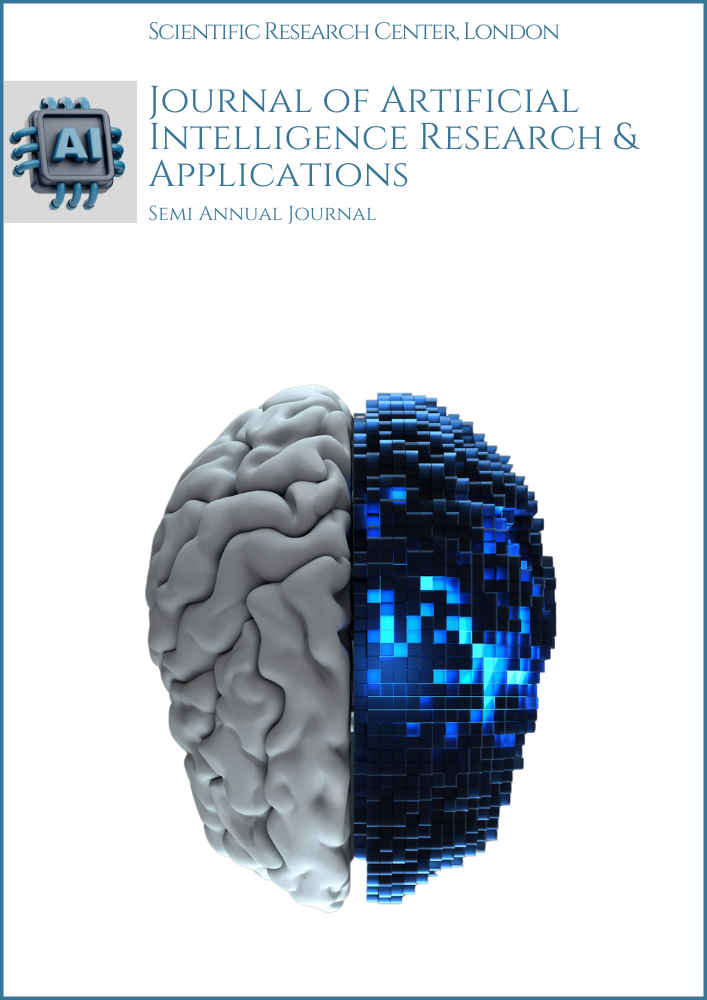Applying Machine Learning Models to Enhance Cloud Security with AWS
Keywords:
machine learning, cloud securityAbstract
In the author’s humble opinion, Rapid adaptation of cloud computing has instituted new security challenges which makes it necessary for advanced solution to protect sensitive data and infrastructure. Machine learning (ML) model provides very promising approaches for enhancing cloud security particularly within Amazon Web Services. Hence, the objective of this paper is to explore the application of ML algorithms for anomaly detection, intrusion detection, and automated threat mitigation in AWS environments.
Downloads
References
I. Goodfellow, J. Shlens, and C. Szegedy, “Explaining and harnessing adversarial examples,” in Proc. Int. Conf. Learn. Representations (ICLR), 2015.
N. Papernot, P. McDaniel, S. Jha, M. Fredrikson, Z. B. Celik, and A. Swami, “The limitations of deep learning in adversarial settings,” in Proc. IEEE Eur. Symp. Secur. Privacy (EuroS&P), Saarbrucken, Germany, 2016, pp. 372–387.
M. Rigaki and S. Garcia, “Bringing AI to the malware fight: Machine learning for cybersecurity,” arXiv preprint arXiv:1803.10099, 2018.
A. Ng, C. Chow, and K. K. Ng, “Machine learning applications in security: An overview on cloud security,” J. Inf. Secur. Appl., vol. 56, pp. 102670, 2021.
H. Hindy, D. Brosset, E. Bayne, C. Tachtatzis, R. Atkinson, and X. Bellekens, “A taxonomy and survey of intrusion detection system design techniques, network threats and datasets,” Comput. Sci. Rev., vol. 38, pp. 100311, 2020.
Y. Li, C. Liu, and A. O. Fapojuwo, “A survey of deep learning-based network anomaly detection,” IEEE Commun. Surv. Tutor., vol. 22, no. 1, pp. 343–376, 2020.
A. B. Hassanpour and C. Fung, “Machine learning for cloud security: A comprehensive review,” Comput. Secur., vol. 110, pp. 102435, 2021.
M. A. Ferrag and A. Ahmim, “Deep learning for cyber security intrusion detection: Approaches, datasets, and comparative study,” J. Inf. Secur. Appl., vol. 54, pp. 102530, 2021.
A. L. Buczak and E. Guven, “A survey of data mining and machine learning methods for cyber security intrusion detection,” IEEE Commun. Surv. Tutor., vol. 18, no. 2, pp. 1153–1176, 2016.
N. Akhtar and A. Mian, “Threat of adversarial attacks on deep learning in computer vision: A survey,” IEEE Access, vol. 6, pp. 14410–14430, 2018.
N. Carlini and D. Wagner, “Towards evaluating the robustness of neural networks,” in Proc. IEEE Symp. Secur. Privacy (S&P), San Jose, CA, USA, 2017, pp. 39–57.
M. Conti, N. Dragoni, and V. Lesyk, “A survey of man in the middle attacks,” IEEE Commun. Surv. Tutor., vol. 18, no. 3, pp. 2027–2051, 2016.
R. M. Mohammad, F. Thabtah, and L. McCluskey, “An assessment of classification models for phishing attack detection,” Expert Syst. Appl., vol. 114, pp. 91–107, 2018.
K. Shaukat, S. Luo, B. Varadharajan, M. Hameed, and M. Xu, “A survey on machine learning techniques for cybersecurity,” arXiv preprint arXiv:2006.03214, 2020.
J. Chen, C. Zhang, and Y. Zhang, “Machine learning for security: The state of the art and challenges,” ACM Comput. Surv., vol. 54, no. 5, pp. 1–36, 2021.
C. C. Aggarwal, “Neural networks and deep learning: A textbook,” Springer, 2021.
A. Amich, M. A. Ferrag, and L. Maglaras, “Security and privacy in federated learning: A survey on threats and countermeasures,” IEEE Commun. Surv. Tutor., vol. 23, no. 4, pp. 2533–2570, 2021.
A. Shukla, D. A. Stiawan, and H. K. Kalutarage, “ML-based anomaly detection for IoT security: A survey,” J. Netw. Comput. Appl., vol. 191, pp. 103139, 2021.
M. Tavallaee, E. Bagheri, W. Lu, and A. Ghorbani, “A detailed analysis of the KDD CUP 99 data set,” in Proc. IEEE Symp. Comput. Intell. Secur. Defense Appl., 2009, pp. 1–6.


